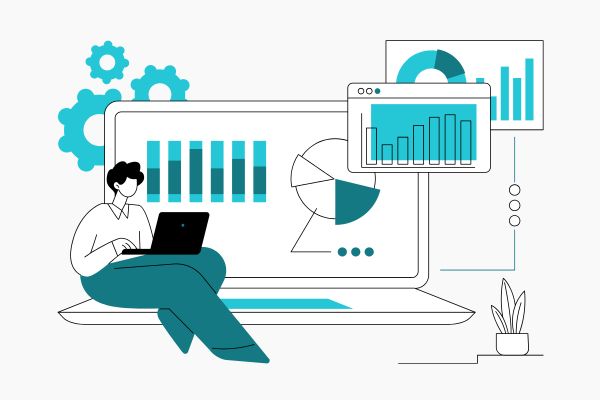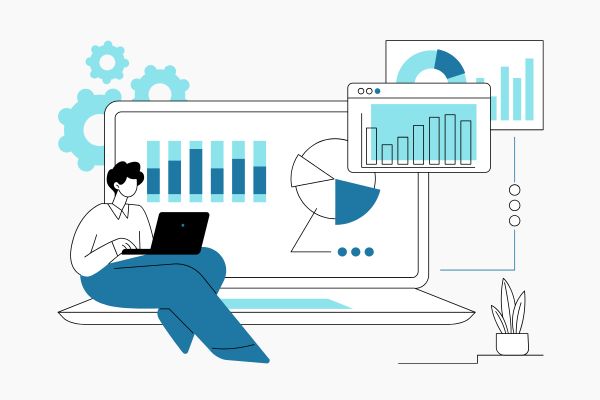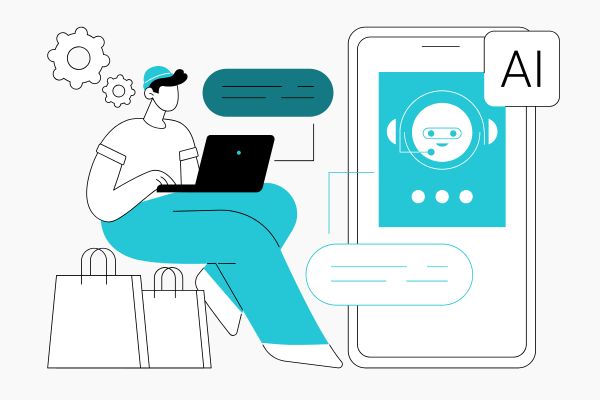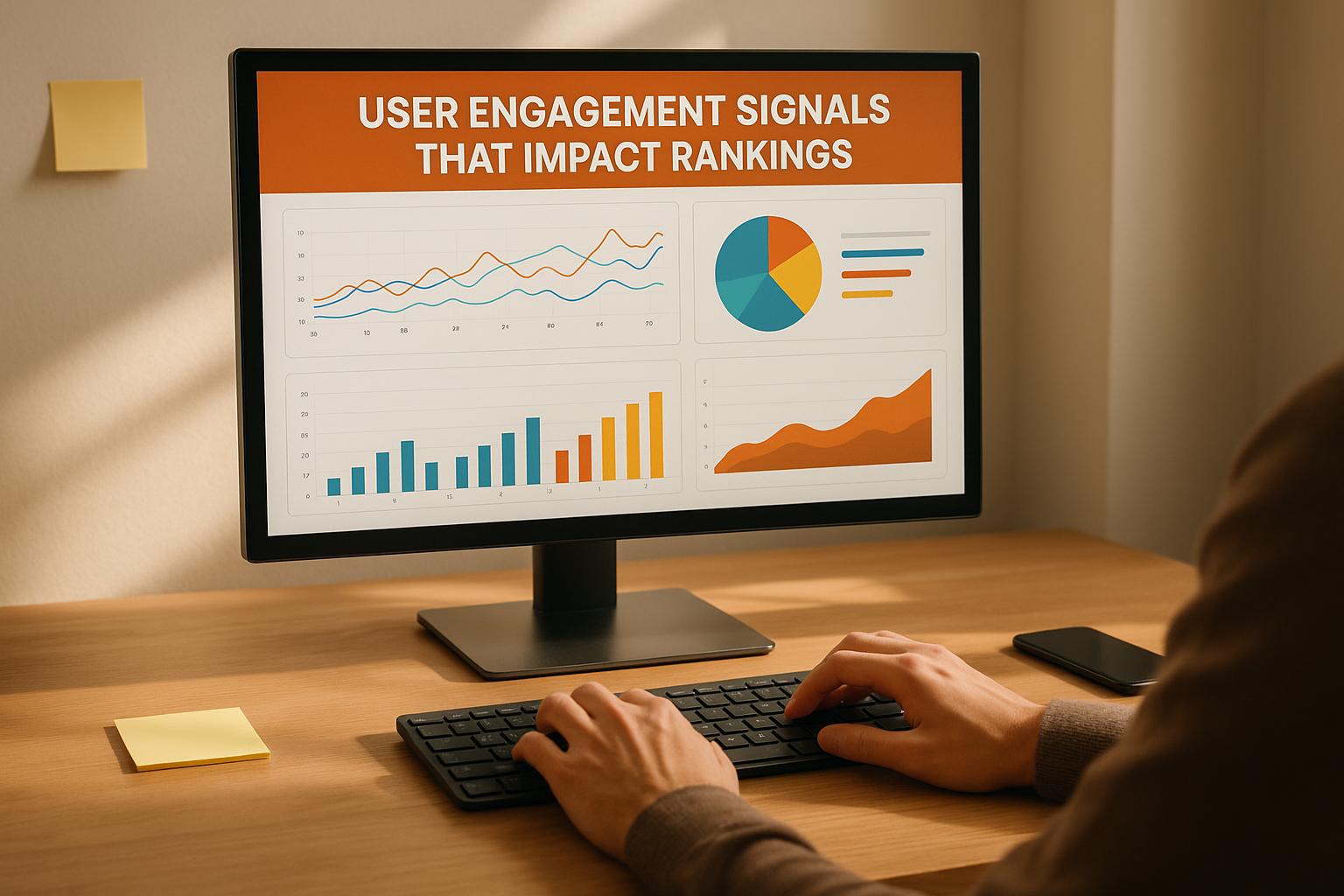

What is A/B Testing? A Guide for Curious Marketers

What is A/B Testing? A Guide for Curious Marketers
 17-01-2025 (Last modified: 21-05-2025)
17-01-2025 (Last modified: 21-05-2025)
Introduction
Let’s set the scene: you’ve just launched a new website or updated your landing page. It’s beautiful, it’s bold, and it’s … underperforming. Cue the internal monologue: Is my headline too vague? Are my buttons not clicky enough? Is this all because Mercury is in retrograde? (Hint: probably not.) Enter A/B testing, the superhero of optimization.
A/B Testing 101
In its simplest form, A/B testing is like a game of “spot the difference” but with actual business results. You take two versions of a web page or element, let’s call them Version A and Version B, and split your audience to see which one performs better. The winner gets eternal bragging rights and a permanent spot on your site.
Why Does It Matter?
Imagine running a marathon. You wouldn’t wear shoes without testing if they’re comfortable, right? (Blisters are not a vibe.) Similarly, you shouldn’t just throw content or designs out into the digital universe without knowing if they work. A/B testing ensures your decisions are backed by data, not gut feelings—because gut feelings belong in the kitchen, not your marketing strategy.

Real-Life Example: The Battle of the Buttons
Let’s say you’re running an online store, and you’ve got a big, bold “Buy Now” button. But is it bold enough? You decide to test two versions:
- Version A: “Buy Now” in classic blue.
- Version B: “Snag This Deal” in attention-grabbing red.
After running the test for a week, you discover Version B gets 25% more clicks. Boom! You’ve just turned casual browsers into paying customers—all thanks to A/B testing.
Key Components of A/B Testing
- Hypothesis: What are you testing and why? (Will changing my CTA color boost clicks?)
- Variants: Create Version A (control) and Version B (variation).
- Audience Split: Randomly divide traffic to ensure fair results.
- Metrics: Define success. Are you tracking clicks, sign-ups, or sales?
- Analyze Results: Use data to declare a winner. (Cue victory dance.)
Expanding the Scope: Beyond Buttons
While buttons and CTAs are popular choices for A/B testing, there’s a whole world of opportunities to explore. Consider testing:
- Headlines: Does a straightforward approach like “Free Shipping on Orders Over $50” perform better than a playful one like “Your Wallet Will Thank You”?
- Images: Test lifestyle photos against product-only images. Which resonates more with your audience?
- Pricing Strategies: Experiment with showing discounts as percentages (“Save 20%”) versus dollar amounts (“Save $10”).
- Form Length: Would a shorter sign-up form increase submissions, or does more detail reassure users?
- Social Proof: Test adding customer testimonials versus highlighting awards or certifications.
A/B Testing in Different Industries
A/B testing isn’t just for e-commerce. It’s a versatile tool for any industry:
- SaaS: Test onboarding flows to reduce churn or increase trial-to-paid conversion rates.
- Media: Experiment with headline phrasing to maximize clicks and shares.
- Nonprofits: Test donation page layouts to encourage higher contributions.
- Healthcare: Optimize appointment scheduling forms for ease of use.
The Role of AI in A/B Testing
AI tools like PageTest.ai are revolutionizing A/B testing by automating the process of creating variations. Instead of brainstorming 10 different versions of a headline, let AI do the heavy lifting. You’ll get smarter, faster results—and probably avoid a caffeine-fueled brainstorm meltdown.

Common A/B Testing Pitfalls
- Testing Too Much at Once: Changing your headline, images, and button colors all at once might leave you guessing which change actually worked. Stick to one tweak per test.
- Ending Tests Too Soon: Good things take time—even data. Wait until you have statistically significant results.
- Ignoring Mobile: Your site might look stunning on desktop but disastrous on mobile. Test both!
- Forgetting User Segmentation: A change that works for one audience segment might flop with another. Use tools to segment your traffic by demographics, device, or behavior.
Statistical Significance: What It Is and Why It Matters
Here’s a quick crash course in stats: statistical significance means your results aren’t due to random chance. It’s the difference between saying, “I think this works” and “I know this works.” Aim for at least 95% confidence in your results before making changes permanent.
Tools of the Trade
If you’re ready to dive into A/B testing, here are some tools to get started:
- Google Optimize (RIP): While it’s no longer available, its legacy lives on in tools like…
- PageTest.ai: Free, user-friendly, and AI-powered.
- Optimizely: A robust platform for enterprise-level testing.
- VWO: Great for testing and heatmapping combined.
Pro Tips for A/B Testing Success
- Use AI to Speed Things Up: Tools like PageTest.ai can suggest content alternatives, saving you time and brainpower. Plus, it’s free for up to 100,000 tests per month. (Yes, you read that right.)
- Always Be Iterating: Even if your first test is a success, there’s always room for improvement. The internet never sleeps, and neither should your optimization efforts.
- Test What Matters: Sure, button colors are fun to test, but focus on elements that impact the bottom line—headlines, pricing, and calls to action.
- Document Everything: Keep track of what you tested, why, and the results. This creates a knowledge base for your team and avoids re-testing the same ideas.
- Involve Your Team: A/B testing isn’t just for marketers. Involve product managers, designers, and developers for a holistic approach.
Final Thoughts
A/B testing isn’t just a tool; it’s a mindset. It’s about challenging assumptions, experimenting fearlessly, and letting data lead the way. So, the next time you’re unsure whether your headline should say “Save Money Now” or “Don’t Miss Out,” remember: you don’t have to guess. You can test.
Now go forth, brave optimizer, and may your conversions be ever in your favor.
Q&A: A/B Testing Unboxed
What exactly is A/B testing?
A/B testing is a method of comparing two versions of a webpage or element—like a button or headline—to see which one performs better with users. You split your audience randomly and track metrics like clicks or conversions to identify a winner.
Why is A/B testing important for websites?
It helps you make decisions based on real data, not hunches. Instead of guessing what works, you test it—leading to smarter design and content choices that improve performance and conversions.
How does A/B testing work in simple terms?
Think of it like a digital duel: Version A vs. Version B. You show both to different users and see which gets better results—be it more clicks, sign-ups, or sales.
What elements can I test with A/B testing?
You can test anything from button text and headline styles to image types, pricing displays, form lengths, and testimonials. If it affects user experience, it’s fair game.
What role does AI play in A/B testing now?
AI tools like PageTest.ai can generate content variations automatically, making it faster and easier to run tests—no need to manually create 10 headline versions before your third coffee.
How long should an A/B test run?
Run your test until the results reach statistical significance—usually with a 95% confidence level. Ending too soon can lead to misleading results and poor decisions.
Can A/B testing help mobile site performance?
Yes, and it should. User behavior differs between devices, so always test on both desktop and mobile to optimize across the board.
What are common A/B testing mistakes to avoid?
Testing too many changes at once, ignoring mobile users, ending tests prematurely, and not segmenting your audience are frequent pitfalls. Keep tests focused and methodical.
Is A/B testing only useful for e-commerce?
Not at all. SaaS companies, nonprofits, media sites, and even healthcare providers can benefit from testing elements like sign-up flows, donation pages, or headlines.
How do I start A/B testing without spending a fortune?
Use free tools like PageTest.ai, which offers AI-powered A/B testing with up to 100,000 free tests per month—perfect for scrappy marketers and small teams.
say hello to easy Content Testing
try PageTest.AI tool for free
Start making the most of your websites traffic and optimize your content and CTAs.
Related Posts

 13-12-2025
13-12-2025
 Becky Halls
Becky Halls
The Biggest Marketing Shifts Coming in 2026: What Actually Matters Now
2026 isn’t bringing “the future of marketing.” It’s bringing the correction. The dust is finally settling after years of AI noise, platform changes, and search unpredictability. And we’re now seeing what actually sticks, and the shifts that will shape how marketing teams operate for the next decade… These aren’t trends for trends’ sake. They’re structural […]

 13-12-2025
13-12-2025
 Ian Naylor
Ian Naylor
User Engagement Signals That Impact Rankings
How CTR, dwell time, bounce rate and pages-per-session influence SEO rankings — and practical steps (UX, titles, testing) to improve engagement.

 12-12-2025
12-12-2025
 Ian Naylor
Ian Naylor
AI-Driven Mobile Segmentation with Real-Time Data
AI mobile segmentation turns real-time behavioral, contextual, and transactional signals into dynamic user groups that boost personalization, retention, and conversions.
